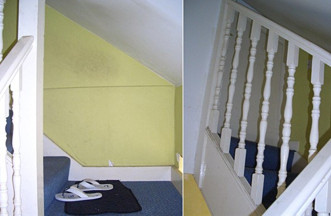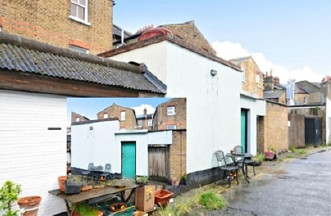Are private market landlords given a bad rep?
We surveyed both landlords and tenants to set the record straight
Let's face it - landlords have a bad reputation. Sometimes that reputation is undeserved but more often than not, it's not without warrant. From terrible living conditions to rents that could easily be considered extortionate, the horror stories are many.
Here are just a few examples of landlords behaving badly:



But is all this bad press really justified? We reached out to both tenants and landlords to find out how perceptions of landlords match up with reality. The results may surprise you...
Tenant responses
Landlord responses
How much annual rental income gets re-invested into property?
Tenant vs landlord responses

58% of tenants believe that less than 10% of rental income is re-invested into the property, with 19.2% of those believing that nothing at all is re-invested.
In contrast, the largest proportion of landlords put this figure at 21-30% of annual rental income.
Landlord re-investment by region

Landlords in the London region re-invest the most - 39.73% of rental income is put back into the property.
Landlords from Northern Ireland re-invest the least in their property - only 7.75% annual rental income.
Landlord re-investment by city

Landlords from Glasgow re-invest the most annual rental income with 50.5% being put back into the property.
Landlord re-investment by age
The amount of re-investment is dependent on the landlord's age - older landlords (35-44 years old) are more generous and re-invest 40% of rental income compared with younger landlords (25-34 years old) at closer to 30%.
What is the most typical type of landlord?
Tenant vs landlord responses

36.9% of tenants correctly identified that landlords were most likely to be part-time. Over half of the landlords we surveyed classified themselves as part-time.
24.1% of tenants thought that most landlords were full-time. 27.3% of the landlords we surveyed ran their portfolio as their primary source of income.
The three biggest costs landlords incurred were repair costs (58.7%), unpaid rent (32%), as well as mortgage interest, chasing payments and refurbishment (joint third with 27.3% of those surveyed).
Type of landlords by region

What was the most common way landlords acquired their property?
Tenant vs landlord responses

Half of tenants believed that landlords bought their property as an outright investment (50%). This was the correct assumption with 42.7% of polled landlords selecting this option.
Tenants thought that only 3.7% of landlords acquired their property through personal savings. In reality, this was 10 times higher at 30.7%.
Landlords cost by age

A greater number of older landlords (45-54 year olds) bought their property as an outright investment or business venture (48%).
A greater number of younger landlords (25 - 34 year olds) acquired their property by chance, e.g. through inheritance (27.5%). This was virtually double the amount of landlords aged 35 or over (avg of 18.9%).
Landlords cost by region

What incurs the greatest cost for landlords?
Tenant vs landlord responses

Most tenants correctly identified that repair costs represented the largest part of landlord expenditure - 52.4% of tenants thought this, with 58.7% of landlords agreeing.
34.4% of tenants thought unpaid rent was the largest expenditure. 32% of landlords agreed.
Landlord costs by region

83.3% of landlords from Yorkshire agreed that repair costs were the largest expenditure. Landlords in Scotland were more likely to agree that unpaid rent incurred the greatest cost (53.3%).
Conclusion
So are landlords that bad? We think it's fair to say that landlords do not profit as handsomely from their properties as tenants would like to think. In fact, on average, the landlords surveyed claimed to reinvest nearly a third of their annual rental income back into their properties. Additionally, although press stories tend to focus around terrible living conditions and extortionate rental prices, it is worth noting that bad tenants are also a major expense for landlords - 32% cited unpaid rent as one of their largest expenditures, with 27.30% also listing the chasing of payments.